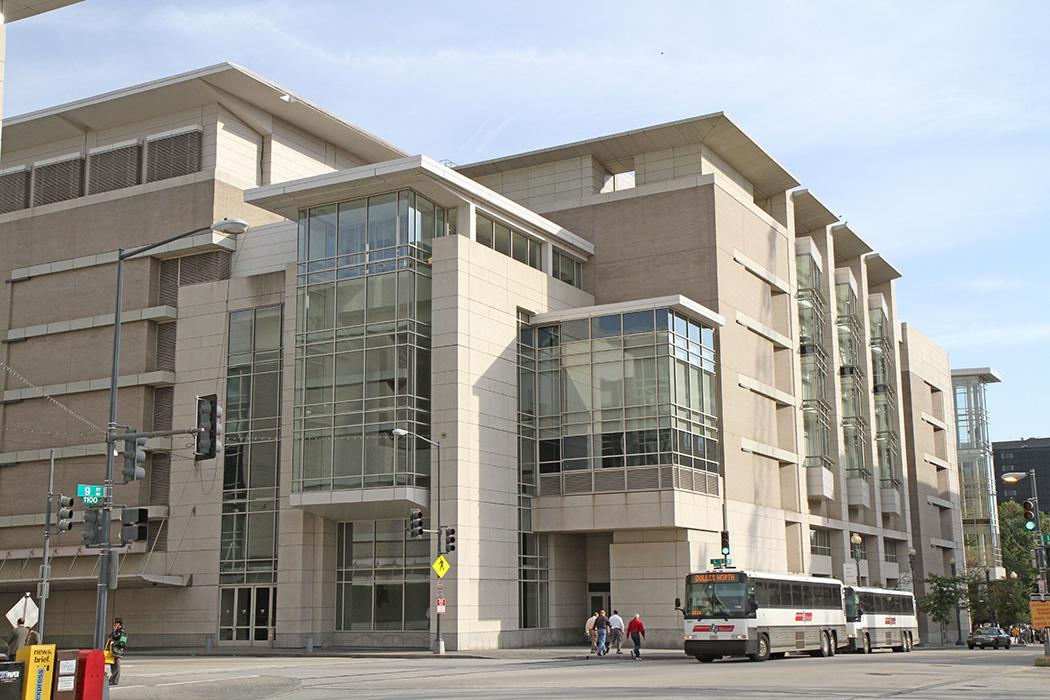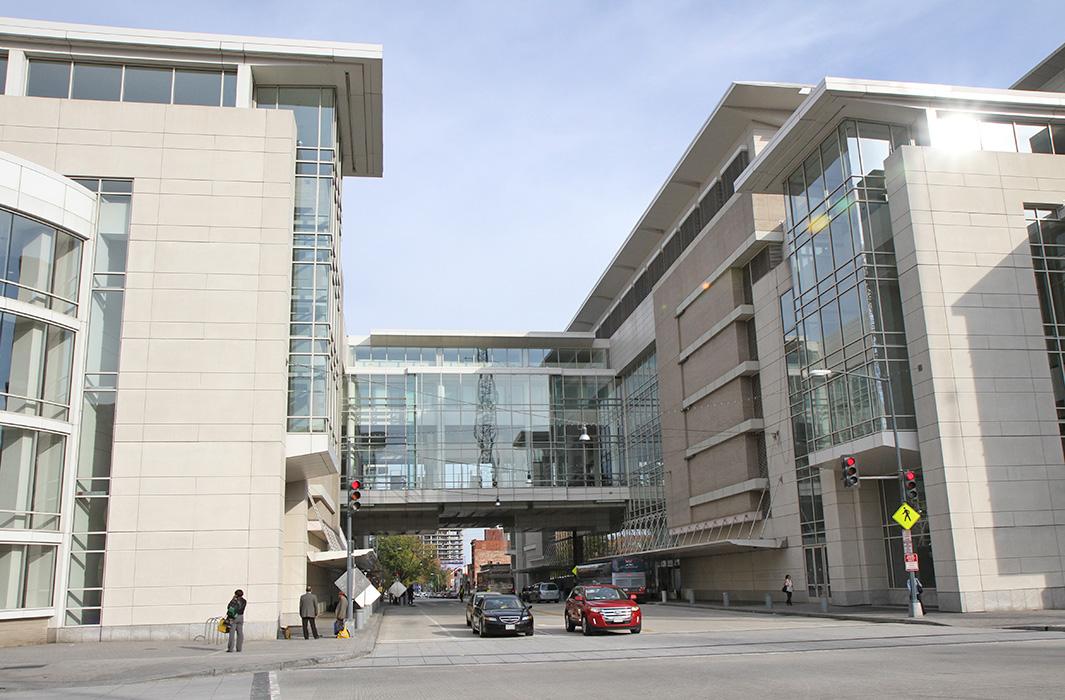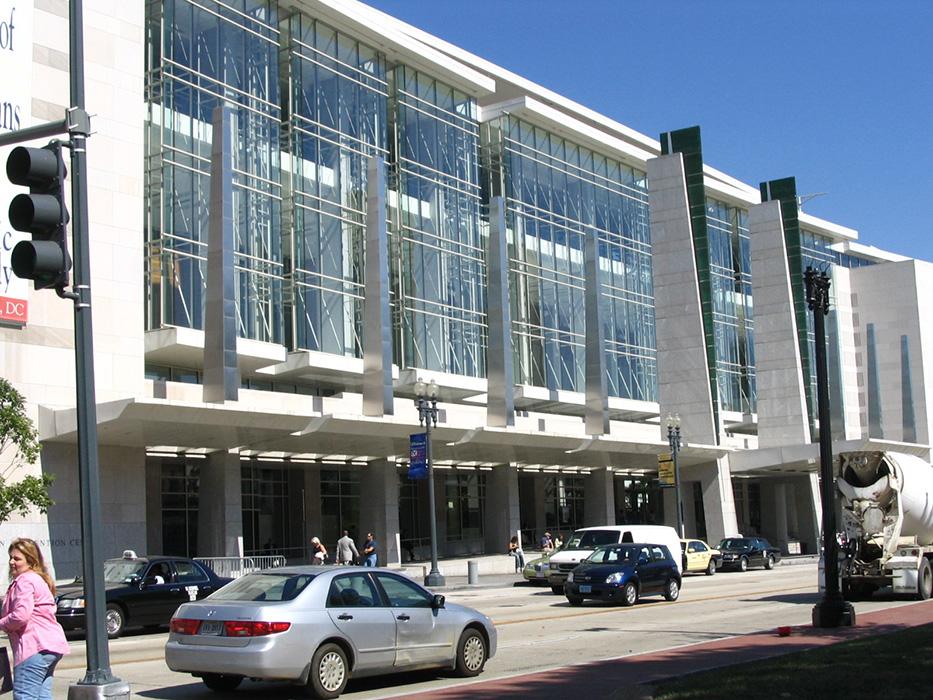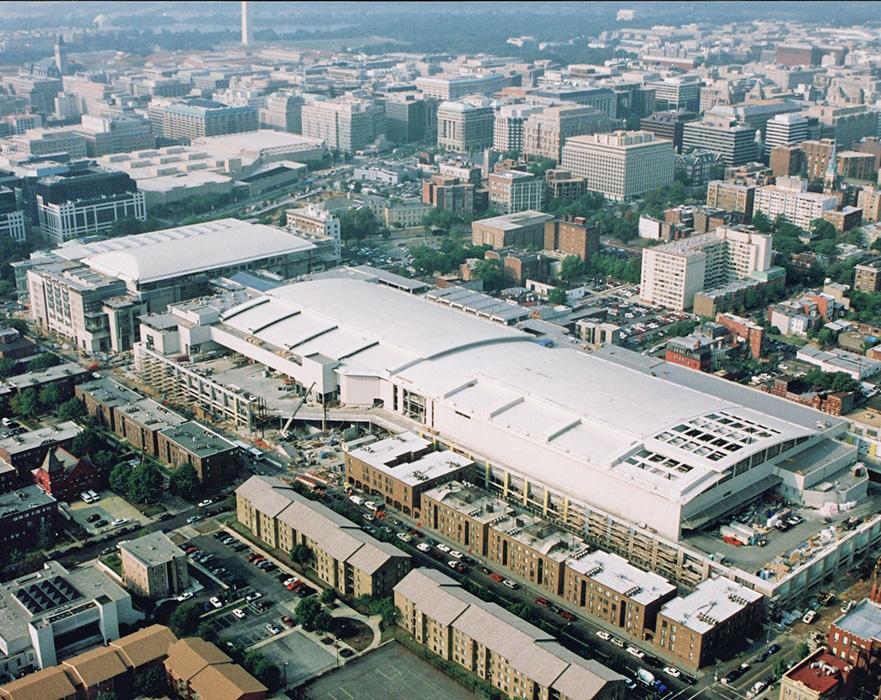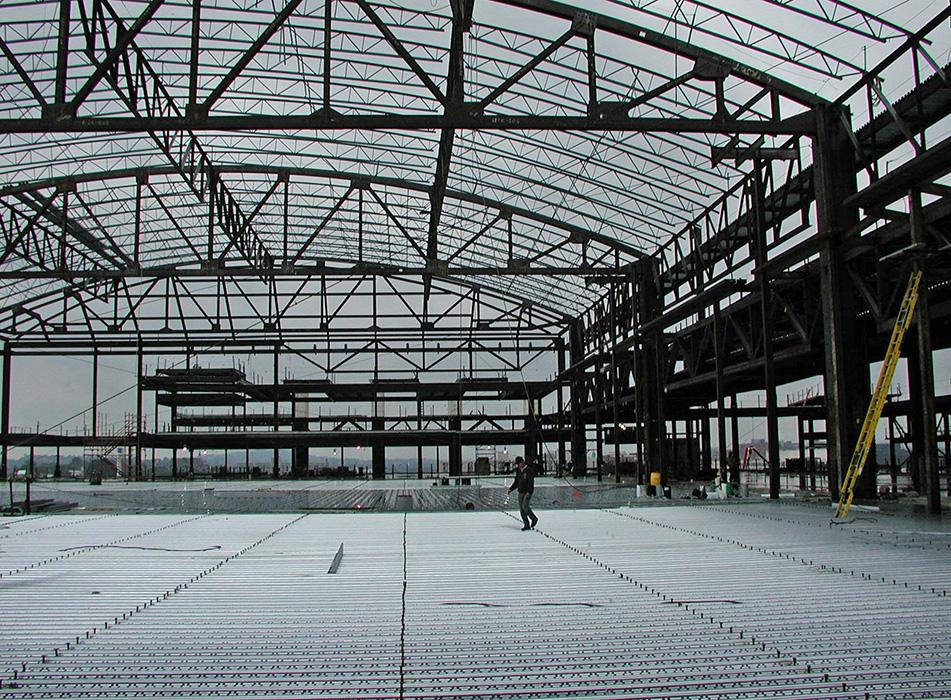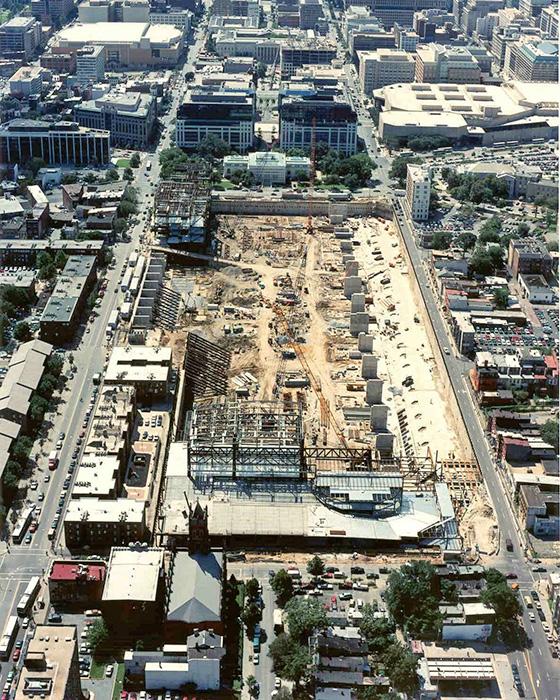Walter E. Washington Convention Center
Preserving L’Enfant’s historic master plan, the 2.3-million-square-foot convention center spans six city blocks throughout the downtown Shaw neighborhood.
Project Details
American Institute of Architects, Design Excellence, 2006
Urban Land Institute, Award for Excellence – The Americas, 2006
Overview
The Walter E. Washington Convention Center, a massive 2.3-million-square-foot facility, stretches across six city blocks in the heart of downtown Shaw. Its design, which respects L’Enfant’s historic master plan, skillfully integrates two major thoroughfares, seamlessly connecting the facility both above and below ground. With over 700,000 square feet of exhibition space, the center has hosted presidential inaugurations, national conventions, and boasts a $6-million permanent art collection.
We provided structural design services to the TVS-D&P-Mariani Joint Venture and Washington Convention Center Authority for the facility, which opened in 2003. Over the past two decades, we have continued to support the convention center through various efforts, including the placement of exhibits and artwork, the installation of escalators and the investigation of necessary repairs. In 2020 we helped convert a section of the convention center space into a 443-bed alternate care facility in response to the coronavirus pandemic.
Highlights
- The site for the convention center bridges both commercial and residential neighborhoods, necessitating varying exterior scales to harmonize with each area.
- The structure is supported by large spread footings, with the entire site encased in a continuous 45-foot-deep slurry wall, independently braced from the building itself.
- The seven-story superstructure is composed of 45,000 tons of high-strength steel, featuring composite concrete slabs on metal decks.
- The typical bays measure 90 by 90 feet, while the trusses that support the 17-acre roof are arched, with clear spans reaching up to 180 feet.
- The design also maintains existing traffic patterns by allowing streets to pass through the convention center.
- The project required coordination with several entities, including the U.S. Commission of Fine Arts, the Advisory Council on Historic Preservation, the D.C. Historic Preservation Division, the Washington Metropolitan Area Transit Authority, and the National Capitol Planning Commission.


